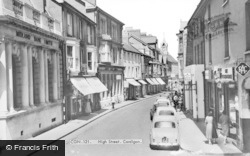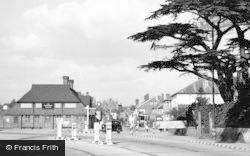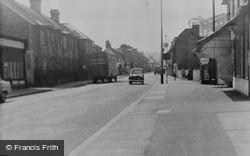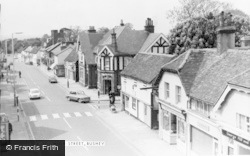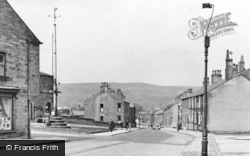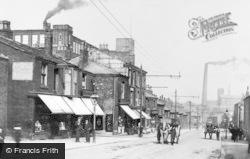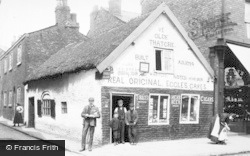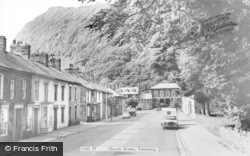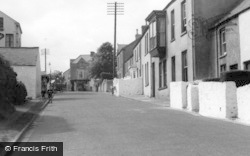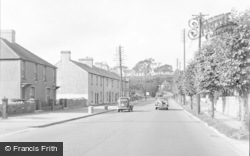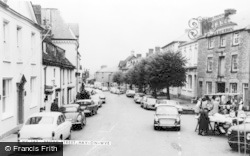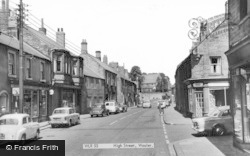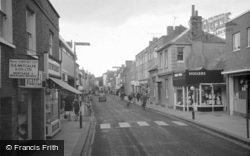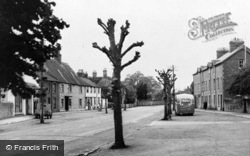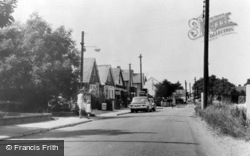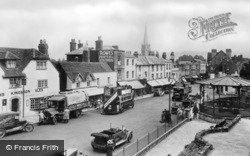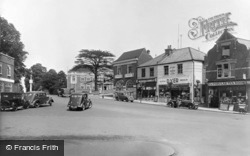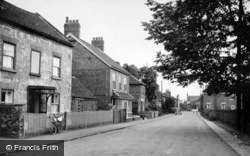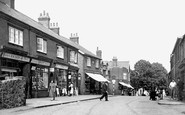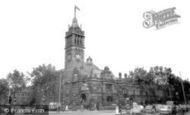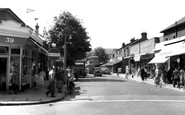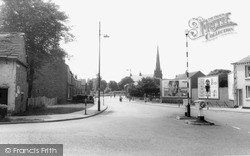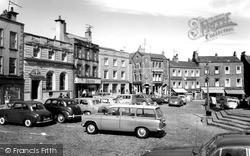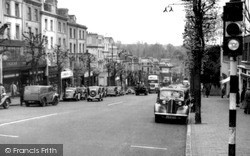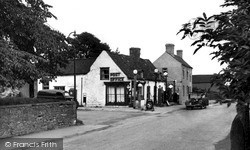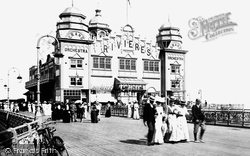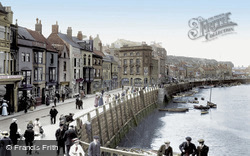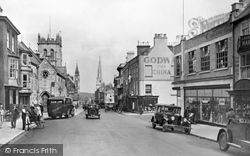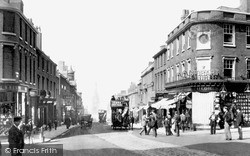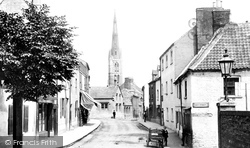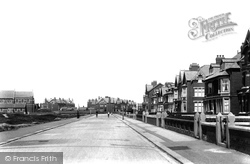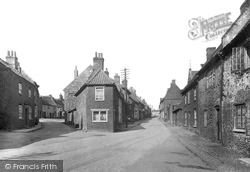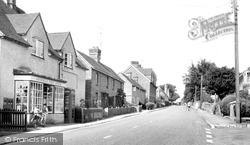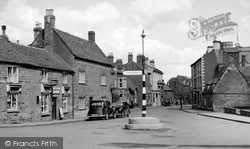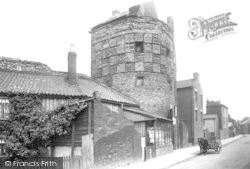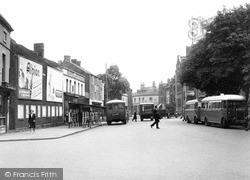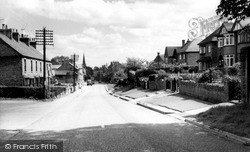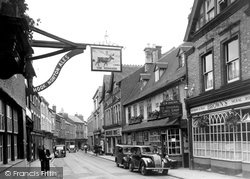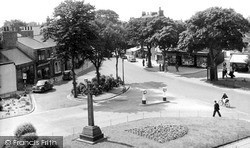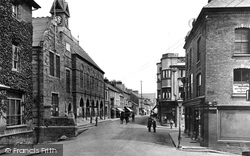Places
36 places found.
Did you mean: street or streetly ?
Those places high-lighted have photos. All locations may have maps, books and memories.
- Heathfield, Sussex (near Cade Street)
- Street, Somerset
- Chester-Le-Street, Durham
- Adwick Le Street, Yorkshire
- Scotch Street, County Armagh
- Friday Street, Surrey
- Potter Street, Essex
- Boughton Street, Kent
- Newgate Street, Hertfordshire
- Streetly, West Midlands
- Shalmsford Street, Kent
- Green Street Green, Greater London
- Boreham Street, Sussex
- Park Street, Hertfordshire
- Cade Street, Sussex
- Appleton-le-Street, Yorkshire
- Hare Street, Hertfordshire (near Buntingford)
- Romney Street, Kent
- Trimley Lower Street, Suffolk
- Streetly End, Cambridgeshire
- Hare Street, Hertfordshire (near Stevenage)
- Brandish Street, Somerset
- Colney Street, Hertfordshire
- Langley Street, Norfolk
- Silver Street, Somerset (near Street)
- Street, Yorkshire (near Glaisdale)
- Street, Lancashire
- Street, Devon
- Street, Cumbria (near Orton)
- Street, Somerset (near Chard)
- Bird Street, Suffolk
- Black Street, Suffolk
- Ash Street, Suffolk
- Broad Street, Wiltshire
- Brome Street, Suffolk
- Penn Street, Buckinghamshire
Photos
21,808 photos found. Showing results 3,381 to 3,400.
Maps
1,622 maps found.
Books
1 books found. Showing results 4,057 to 1.
Memories
6,666 memories found. Showing results 1,691 to 1,700.
Neath William Phillips Family
I live in Newcastle, NSW, Australia. My relative, William Phillips was born in Neath and lived at 14 Company Street, Llantwit Fardre when married. He was a collier. He married 6/1875 Rachel Thomas (b.18/7/1852 ...Read more
A memory of Neath in 1880 by
The Carlton Grocery Etc Chester Road Little Sutton
My family had 'The Carlton' shop during my childhood and teenage years. My mum and dad (82 and 87) still live in Sutton, and I get back to visit often (I live in Spain). I have many fond ...Read more
A memory of Little Sutton in 1967 by
Woodgate
I too was brought up in Rothley. I lived at 72, Woodgate. At the time it was the local telephone exchange, operated manually, my mother being the night operator. I remember George Hunt well, along with the Elkingtons, I used to get my ...Read more
A memory of Rothley in 1951 by
The Cozy
Hello, we lived in Railway Terrace, moved to Scotland in 1963. We spent many a Saturday morning in the Cozy Picture House, then across the road to the chippy for some potato fitters (lovely with lots of vinegar). James Sims, Elaine Brain, Marlene Griftfths. Gran lived in Albert Street.
A memory of Caerau in 1962 by
Keppel Road
I grew up in Kepple Road at no 22, opposite the little flats between 1962/83. I went to Altmore/Napier-Nelson/EHGS/Langdon schools. I recall the High Street and I worked on the seafood stall outside the Cock for Pete. I remember the ...Read more
A memory of East Ham by
Samples Yard
I used to live a few doors from auld Jimmy Sample and his wife Carrie, his son John was married to June and they lived in Francis Terrace. They had their rag and bone yard down the Winnin, anyway I would spend summer nights, weekends ...Read more
A memory of Newburn in 1955 by
Post War Memory
Reading the other memories I remembered a group of us watching - oh what was his name - an artistic painter, doing up the Chocolate Box opposite the Chamberlayne Arms on the corner of Blenheim Road and High Street, and we watched ...Read more
A memory of Eastleigh in 1946 by
Happy Memories
My parents, Thomas and Lily Evans, made their first home in a tiny house called the Lamb and Flag in Llangynwyd, just above Cwmfelin. It was, and still is, the most beautiful place. My father worked down ...Read more
A memory of Cwmfelin in 1930 by
When L Was Little
Hello, I was born at Paxton Park in 1948. My mum was Sheila Shepherd, daughter of Lilian and Percy. Mum married Horace Hermitage who was stationed there, they married and went off to live in Kent but she came back to St Neots ...Read more
A memory of Eynesbury in 1960 by
Captions
5,381 captions found. Showing results 4,057 to 4,080.
Note the tram lines running down the middle of the street. On the left is the imposing Georgian church of All Saints, built in 1795.
Now much busier than portrayed in our picture, this junction has acquired all the additional street furniture that is apparently so vital to a modern lifestyle.
The roofs behind, parallel to the High Row of the Market Place, are houses in Waterloo Street, demolished in 1963.
The carefully-pollarded lime trees along both sides of this north to south street help to shade the frontages of the varied shops and other retail establishments which flourish here.
Ludford is a now a single-street village on the Louth to Gainsborough road at the head of the River Bain, which flows south through the Wolds to join the River Witham.
This photograph shows the more residential character of this street. A rare tin sign for Arthur Rozier, tin and zinc worker, is on the 16th-century jettied building to the left.
The elegance of the pier was echoed by the broad streets of the town, which were built to resemble fine boulevards.
The coming of the railway put Whitby firmly on the tourist map; its harbourside streets, ruined abbey, and souvenirs made from jet (a fossilized wood found locally), all proved a magnet for holidaymakers
The tower of the medieval St Peter's Church, seen here on the left, dominates much of Dorchester's High Street.
In the days of horse-drawn trams Darlington Street was considered wide enough for a single line only, and here inbound and outbound cars have made use of the passing loop.
The name sign 'East Street' has been reused on a 1960s replacement for the buildings on the right, while beyond the Gothic-style school soars the 280 feet tower and spire of St Wulfram's.
Given the Earl of Scarbrough's family name, Lumley Road is a straight road with the old High Street winding along south of it, diverging to the left of the trees to meet again at Lumley Square in front
Here we see a clean and spacious street with no traffic. The buildings were all good quality brick with stone cappings and gate posts.
The long straight high street eventually opens up into the Friday market place.
Looking down New Street to the Moot Hall, we can see on the right a brick Georgian house where many BBC trainees lodged in the 1960s.
High Street c1955. Ardingly, pronounced Arding-lie, is situated to the north of Haywards Heath and is famous in Sussex as the setting for Ardingly College.
Here, the High Street splits into three roads: to Leicester; to South Back Way and to Stockerston. The rather crude signpost has now gone and there is no entry from this direction.
The Blackfriars, otherwise known as the South-East Tower, was used in the 19th century as a shop at street level with accommodation above—there was even a small cottage built on top.
Now, together with Bond Street, it is a dispiriting introduction to Nuneaton for those of us who arrive by train.
Ashby Road becomes the High Street at the crossroads (centre); to the left is Packington Hill, and to the right Broadhill Road.
The High Street was still predominantly Georgian at this time. On the right-hand side is The Golden Cross Hotel, rebuilt in 1932 on the site of one of Bromsgrove's oldest coaching inns.
The Original Cake Shop in Parsons Street (run by E W Brown at the time of this photograph) was demolished in 1968.
The High Street leads towards Stockton in the centre. The property on the left is little changed today.
This stretch of the High Street is wider than the rest, probably because the market was originally held here; the market was moved into the Guild Hall with its clock tower on the left, designed by Withers
Places (385)
Photos (21808)
Memories (6666)
Books (1)
Maps (1622)


